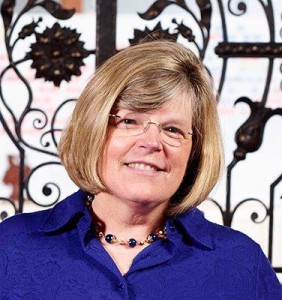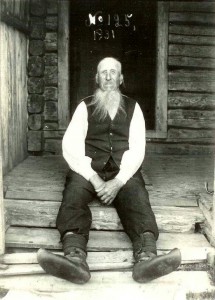[Editor's note: This post originally appeared in Vita Brevis on 7 October 2014.]
 Last week, I was happily recalling my 2012 trip to Finland, specifically a visit to my ancestral village, Teuva. I had the great good luck to meet cousins there and see the land that my ancestors farmed – and even the foundation of the tiny house where my grandmother grew up.
Last week, I was happily recalling my 2012 trip to Finland, specifically a visit to my ancestral village, Teuva. I had the great good luck to meet cousins there and see the land that my ancestors farmed – and even the foundation of the tiny house where my grandmother grew up.
When first planning that trip, I had no idea how to proceed. I could look at a map and find Teuva – and the nearest train station with a rental car facility – but I had no idea how to go about identifying living relatives.
Even though my grandparents were the immigrants, none of my living relatives had any connections with Finland. With the help of some colleagues, I came up with some strategies:
- Find out where your ancestors are buried. If a churchyard, contact the church office to see who’s tending their graves – those grave tenders might be relatives. In my case, this strategy didn’t pay off. The Lutheran church in Teuva burned down in 1950, and the gravestones are generally more recent.
- Find a local family historian to help. When I corresponded with the church, I asked if the administrator knew of anyone in town with an interest in family history. If nothing else, I figured, that person could drive with me around town and point out land my ancestors might have farmed. Luckily, the church connected me with an amateur genealogist. I sent him names of my ancestors, and when I arrived in Teuva he had not only prepared a family tree but identified living cousins and sites of ancestral homes. Together with these cousins, I visited my grandmother’s birthplace and drove past farms where I now knew my ancestors had worked.
- Use Facebook. I was already a member of a Finnish genealogy group on Facebook. On that page I posted a list of ancestors and asked if anyone was related or knew of relatives. Someone was indeed a cousin, though not in Teuva – and with no current connections there. Although we weren’t able to arrange to meet in Finland, we will definitely do so in the future. The Facebook group also helped translate letters into Finnish. And, through Facebook, I’ve kept in touch with a Finnish cousin I met in Teuva as well as with the family historian/chauffeur – and with a distant cousin in the United States, whom I hope to meet next summer at a reunion of her branch of the family in Pennsylvania.
- Make connections through genealogical websites. Since my Finland trip, I’ve “met” yet another cousin online, via MyHeritage.com. She lives outside Helsinki. I will definitely visit her on my next trip to Finland – though she might also go to that Pennsylvania reunion next year!
I’ve got more connections now for my next trip to Finland. But now I’m thinking about a trip to find Rohrbachs in Switzerland, once I determine where Johann Rohrbach was born around 1848. A consultation with Rhonda McClure is in order!
Share this:
About Penny Stratton
A veteran of the book publishing industry, Penny Stratton retired as NEHGS Publishing Director in June 2016; she continues to consult with the Society on publications projects. Among the more than 65 titles she managed at NEHGS are The Great Migration Directory, Elements of Genealogical Analysis, Genealogist’s Handbook for New England Research, and the award-winning Descendants of Judge John Lowell of Newburyport, Massachusetts. She has written for American Ancestors magazine and is a regular poster on Vita Brevis. With Henry B. Hoff, Penny is coauthor of Guide to Genealogical Writing: How to Write and Publish Your Family History; she is also the author of several Portable Genealogists on writing and publishing topics.View all posts by Penny Stratton →
